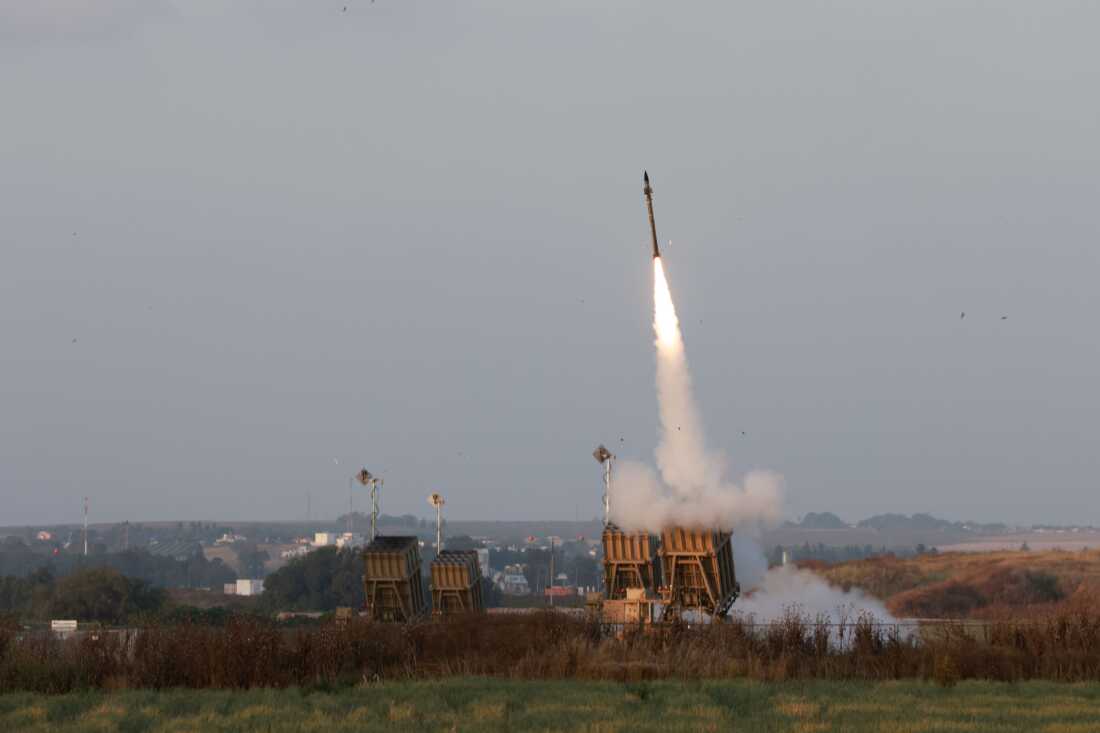Understanding Israel's Iron Dome: A Revolutionary Defence System Against Rocket Attacks
~ By Sujeet Rawat
Oct 2 2024, 04:50 PM

The Iron Dome is a state-of-the-art missile defence system that plays a vital role in Israel's national security strategy. Specifically designed to counter low-tech rockets, primarily fired by the Palestinian militant group Hamas, the Iron Dome was developed by Rafael Advanced Defense Systems with substantial support from the United States. Since its operational debut in 2011, it has become an essential shield for Israeli cities against aerial threats.
Recent events have underscored the system's critical importance. Following Iran's missile attacks on October 1, the Iron Dome was activated once again, successfully intercepting various projectiles, including hypersonic ballistic missiles. This response came shortly after the system's effective interception of rockets fired by Hezbollah on September 23, which demonstrated its adaptability and reliability in real-time combat scenarios.
The origin of the Iron Dome can be traced back to Israel's need for enhanced defence capabilities, particularly after the 2006 conflict with Hezbollah, which saw thousands of rockets targeting Israeli territories. The system is equipped with advanced radar technology that differentiates between threats and harmless projectiles, allowing it to minimize unnecessary interceptions. Each Iron Dome battery is capable of launching interceptor missiles at incoming threats deemed capable of causing damage, which has significantly contributed to its impressive success rate of over 90%.
The Iron Dome consists of several key components, including radar-guided missiles and multiple launchers. Each battery typically contains three to four launchers, each capable of firing twenty interceptor missiles. This deployment structure enables the system to respond quickly to multiple threats simultaneously. The strategic design of the Iron Dome allows it to function effectively in various weather conditions, making it a reliable defence mechanism for Israel's civilian population.
While the Iron Dome has achieved remarkable success in intercepting projectiles, it faced challenges during the mass missile attacks launched by Hamas on October 7, 2023. Although the system intercepted a significant number of rockets, the volume of attacks—over 5,000 in a short span—overwhelmed its capabilities, leading to unfortunate casualties and prompting Israel to declare war on Hamas.
The Iron Dome is not Israel's only missile defence system; it is part of a broader multi-layered defence strategy. This strategy includes the Arrow system, designed to counter long-range ballistic missiles, and David's Sling, aimed at medium-range threats. Additionally, Israel is currently developing Iron Beam, a new laser technology-based system intended to enhance interception capabilities while reducing operational costs.
The geopolitical implications of the Iron Dome extend beyond Israel's borders. The U.S. has shown strong support for the system, recognizing its significance in enhancing the defence capabilities of an ally in a volatile region. In 2019, the U.S. Army signed a contract to acquire two Iron Dome batteries, reflecting a commitment to bolstering its short-range missile defence.
ALSO READ| Impact of Geopolitical Events on Crude Oil Prices: A Temporary Surge or a Lasting Trend?
As tensions in the Middle East continue to escalate, Israel remains committed to maintaining its defence posture. Prime Minister Benjamin Netanyahu has assured that Israel will retaliate against attacks at a time and place of its choosing, emphasizing the importance of the Iron Dome in safeguarding the nation.
Recent Posts
Trending Topics
Top Categories
QUICK LINKS
Copyright © 2024 Arthalogy.com. All rights reserved.
